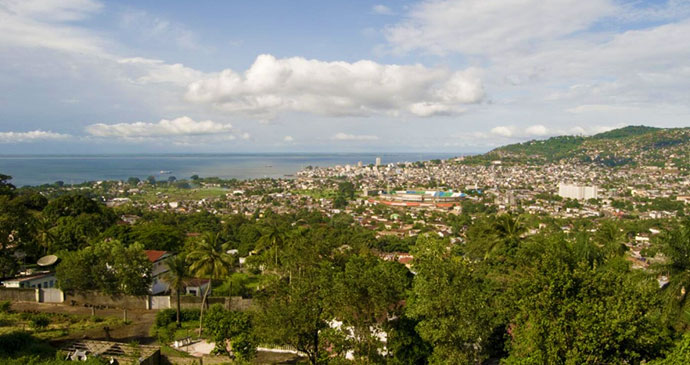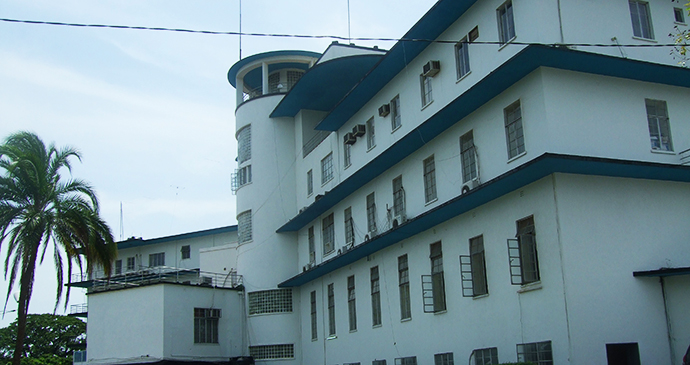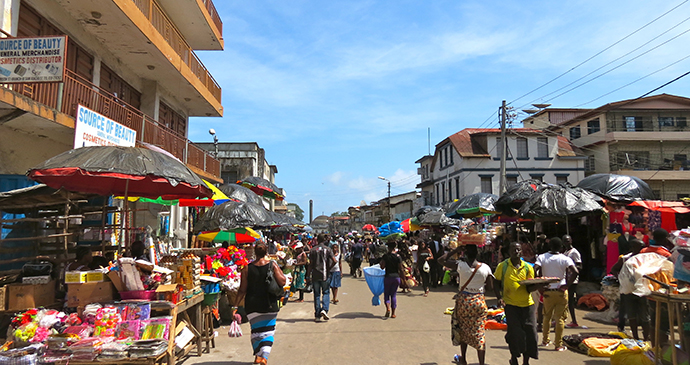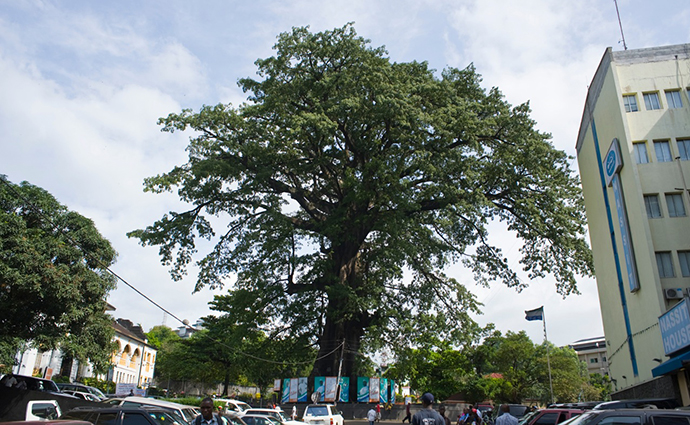Written by Katrina Manson and James Knight
 Between the jungle and the sea, the streets of Freetown are a colourful hotch-potch of architecture © National Tourist Board of Sierra Leone
Between the jungle and the sea, the streets of Freetown are a colourful hotch-potch of architecture © National Tourist Board of Sierra Leone
Names and places in the capital Freetown call up triumphant moments of freedom and sorrowful passings, testament to the men who made them happen, and the places that fostered them. The gridded street layout of central downtown is the same as that of 1794, rebuilt after the French had burnt everything down – a legacy of the Napoleonic war effort that extended to west Africa as well as Waterloo. When this central area was first created, under the Nova Scotian efforts of 1792, 12 streets were cut from the bush – nine perpendicular to the waterfront and three crossing them at right angles, parallel to the shore – and each named after a company director of the Sierra Leone Company, which had paid for their passage.

The land beneath State House was home to the even earlier first group settlers from Britain, who disembarked in May 1787 and cut their way through the bush to plant their flag at the top of this hill and called their new settlement Granville Town. King Tom, the Temne chief who agreed to let them land, has a neighbourhood named after him in the northern tip of the capital, now home to a football ground and one of the city’s two huge smouldering rubbish dumps. King Jemmy, who burnt the original Province of Freedom down, is the inspiration for King Jimmy Market, a ramshackle affair of food and random electrical goods, much of it stolen – testament to the man’s opportunistic side.

Known unfathomably as the Portuguese Steps, well-liked governor Charles MacCarthy, sent from England, erected the stone stairs that led down to the Old Wharf, which he also expanded as part of a £150,000 building spree between 1816 and 1824. Race Course Road commemorates one of his more outlandish ideas – regular horse racing – at Fourah Bay in the east. The walls of the central St George’s Cathedral, built in 1817, commemorate ‘disconsolate mothers’ whose sons were lost at sea and is a lovely church to visit.
Susan’s Bay, now part of the sprawling seaside slum melded with Mabella, was named by Freetown governor John Clarkson after the fiancée he left behind in Britain to take up the post, and who eventually drew him back home. Before it becameknown as Kroo Bay, the waters to the north of the city were known as Frenchman’s Bay and then promptly switched to St George’s Bay in a fit of patriotic fervour by Captain Thompson, who sailed in with the Province of Freedom’s first residents.

The majestic bowers of the Cotton Tree that mark the start of downtown have seen a great deal. Now the tree oversees honking traffic inching round its trunk and hundreds of bats clinging to its boughs. This was the beacon around which the first Nova Scotians cleared land on arriving in 1792, and to which the devoutly Christian settlers later walked, slow-singing hymns in tribute to the long struggle they had endured, after 65 of their party had died on the winter journey from Halifax. ‘The day of Jubilee is come,’ they sang. The service they held beneath the tree marked one of thanksgiving, and the moment that Freetown was christened.
It was under this tree too, as the sun was setting one day later that year, that John Clarkson – the British superintendent of the colony – told Thomas Peters, the hero of the Nova Scotians who was now furious that the colony was being ruled by a council of eight Englishmen, that ‘one or other of us would be hanged upon that Tree’ before they settled their differences. It wasn’t long before Peters died, and Clarkson returned to England.
Wilberforce village in the hilly west of town, and Wilberforce Street in the centre of town, are named after the British abolitionist member of parliament William Wilberforce, who was horrified that London’s black poor went unfed by the Poor Law officers, who said they had no responsibility to feed those whose origin was elsewhere. His 1876 Society for Effecting the Abolition of the Slave Trade, formed with Granville Sharp, Thomas Clarkson (John’s brother) and Henry Thornton finally bore fruit in 1807. Wilberforce was also a vice president of the Church Missionary Society, which Governor MacCarthy directed to help settle recaptives in one of eight parishes, including Wilberforce. Also in town, Sir Samuel Lewis Road is named after the country’s first lawyer, the city’s first mayor (of 1895) and the accomplished man who became the first African to be knighted, in 1896.
Explore more of Sierra Leone with out new, updated guidebook:

